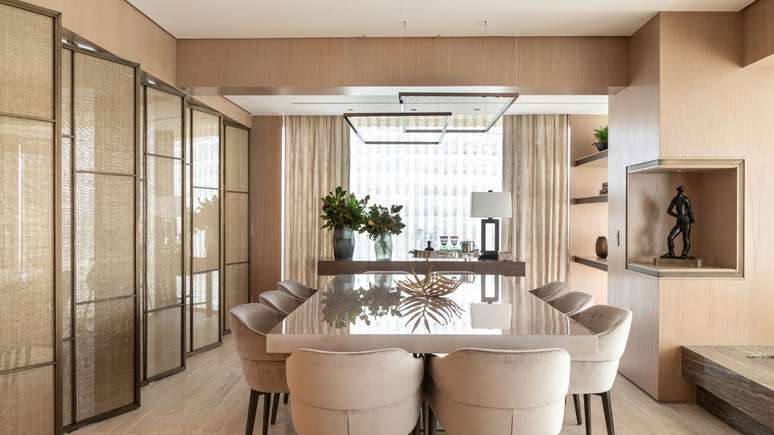Using screens and room dividers helps to divide spaces and add more comfort to your home.
Join or divide the environments, provide a wide view of the environment and leave it private, when necessary. At first glance, these characteristics seem contrasting, or even exclusive, but the screens and the hollow partitions They can be perfect decorative objects to delimit spaces without hindering existing integration.
In particular, screens, which appeared in historical periods in ancient China to gain space in the furnishings of other Asian countries and then spread throughout Europe. They are accompanied by a more decorative language that also focuses on the task of “protecting” the privacy of an environment.
The hollow wall, due to its more robust structure, is a widely used means to control the entry of light from outside to the interior of residential projects, in addition to acting in the distinction between environments in the concept of integration and, in a way, also cooperating in acoustic insulation.
“In addition to more private spaces, they are great when you want to delimit a space without the need to incorporate a wall or a door,” says architect Andrea Teixeira regarding the importance of these elements as points of intersection or even connection between rooms. “In addition to the artistic effect of the screen, they express an even greater identity in the projects,” he adds.
Betting on Dividers
The divisions arose from the need to deliver a private essence that can occur at specific times, but not to the point of requiring inclusion as something fixed and definitive.
“As a valuable architectural resource, the application opens up countless possibilities for allowing spaces to communicate with each other, while also providing more fluid circulation for residents and visitors,” the architect notes.
A recurring doubt surrounding the topic concerns the material and, according to Andrea, the most suitable are wood and metals such as brass or painted iron that support the partition. With this mix it is possible to create compositions that match the furnishing proposal and do not clash.
However, when the partition wall has translucent elements, the internal cladding of the structure must follow the proposal and include materials such as hollow straw, wire mesh or glass, options that help ensure partial or total vision.
Isolate the environment
It is very common to look for partition walls for environments that require greater privacy and acoustic comfort, such as home theater. For this environment, which was located in one of the corridors of the social area, Andrea suggests a three-leaf kinetic screen featuring wood and silk straw as cladding.
However, the architect cautions against including partitions in small properties. “With this idea of dividing the rooms, a hollow element ends up reducing the space even more,” he observes. In these cases, glass also reduces ventilation between rooms.
Source: Terra
Ben Stock is a lifestyle journalist and author at Gossipify. He writes about topics such as health, wellness, travel, food and home decor. He provides practical advice and inspiration to improve well-being, keeps readers up to date with latest lifestyle news and trends, known for his engaging writing style, in-depth analysis and unique perspectives.








